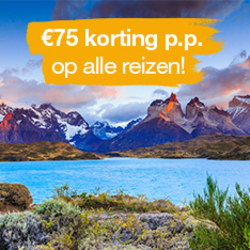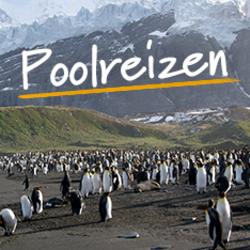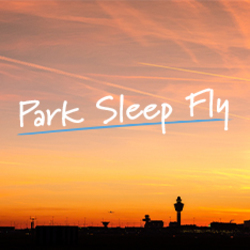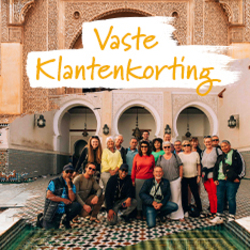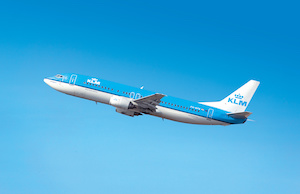Profiteer t/m 2 mei
BekijkActivities
- Wildlife Holidays
- The chance to see lemurs in their natural habitat. Incredible wildlife in the Andasibe Nature Reserve and in Ranamofana National Park. Isalo National Park, with its amazing rock formations, spectacular canyons and natural swimming holes. Striking spiny forest in Tsimanampetsotsa National Park. Relax on the beach in the coastal town of Anakao
Food
-
1
Start Antananarivo.
There are no included activities today so you are free to arrive at any time. The group flights usually arrive in the early afternoon. This evening's welcome briefing is the perfect opportunity to meet your guide and get to know your fellow travellers.Accommodation: Belvedere Hotel or similarStandard Hotel
-
2
Antananarivo city tour; drive to Andasibe.
This morning we embark on a city tour of Tana, the picturesque capital of Madagascar. With its bustling markets, friendly people and ancient town on a hill with freestone churches and ancient royal places, it is unique among the world’s other capitals. We then drive to Andasibe through the green and luxuriant vegetation of the east. This first step brings us to the humid part of the country with many primary forests and lakes. Along the way we will see Merina villages in the rocky mountains. We will arrive in Andasibe at around 4pm and the rest of the afternoon is free to relax. In the early evening we take a twilight/nocturnal walk along the road, close to the Andasibe Nature Reserve, looking out for the nocturnal species of lemur as the torchlights pass their eyes.Accommodation: Hotel Feon’ny Ala or similarStandard Hotel
-
3
Morning trek in Andasibe National Park and and afternoon visit to Vondron’olona Miaro Mitia Ala Reserve.
Discover Andasibe National Park (also known as Perinet) and its wildlife on a 4 hour walk. The park is home to the teddy bear-like Indri, the largest of Madagascar's lemur species, as well as other forms of flora and fauna and a wide array of bird life. Listening to the piercing yet melancholy cry of the Indri in the morning is an evocative sound and for those who are prepared to follow them through the thick rainforest, the reward is often a close-up view of these beautiful creatures. A group of five Diademed sifaka have recently been re-introduced to Andasibe from Mantadia, and if we are lucky, we may spot one of these unusual creatures.In the afternoon we visit the Vondron’olona Miaro Mitia Ala Reserve. This is a community run reserve where you are able to see several species of lemurs and birds. The reserve is an untouched paradise for endemic animals and plants. There are groups of Indris which we hope to see here in their natural habitat, and their white-headed relatives, the Diademed sifakas, jump between the tree tops. For reptiles and amphibian lovers, the reserve offers countless frogs along its crystal clear river and several amazing chameleons can be found in the forest.Accommodation: Hotel Feon’ny Ala or similarStandard Hotel
-
4
Return to Antananarivo; continue to Antsirabe.
We drive back to Tana, and head south to Antsirabe, across the highland landscape with its beautiful rice fields on stage. The spectacular eroded hills called ‘lavaka’ remind us of the Far East with its rice fields and green landscape with vegetables and fruit trees. Antsirabe, or ‘the place of salt’, is an elegant city well known as the centre of the beer industry and we can smell the Star Brewery as we enter the town. Founded by the Norwegians in 1856, it is the only place which really feels and looks like a European city. It has a temperate climate and all fruits and vegetable, which grow in cold climates, are found in Antsirabe.Accommodation: Les Chambers du Voyageur or similarStandard Hotel
-
5
To Ranomafana.
After breakfast we drive to Ambositra, the centre of Madagascar's wood carving industry. We are still in the highlands, which are characterized by their architecture: the houses are made with ornately carved wooden balconies and shutters with bright colours. Further on we pass the ‘le col de tapia’, a type of tree, which is resistant to the bush fires of the area. The landscape is still dominated by rice fields on stage, pine forests and eucalyptus trees and rocky mountains. Our destination for the day: Ranomafana National Park. Accommodation: Centrest Hotel or similarStandard Hotel
-
6
Full day in Ranomafana N.P.
Parc National de Ranomafana (approximately 40,000ha), with its rain forested hills and abundant wildlife, has long been considered one of Madagascar’s highlights, and is one of the most heavily visited of the country’s national parks. Its entrance lies about 7km from Ranomafana village. Altitudes in the park range from 800m to 1200m. In addition to its densely forested hills, Ranomafana’s terrain is characterised by numerous small streams, which plummet down to the beautiful Namorona River. Although much of the region has been logged, the easternmost part of the park retains relatively large areas of primary forest.We go for a walk in the national park for approximately five hours in the hopes of spotting some of the lemurs, chameleons and other animals found here. We hope to see Golden bamboo lemurs who are unique to this park, as well as other lemurs such as the Eastern woolly lemur, the Red bellied lemur, the Grey bamboo lemur, and the Red-fronted brown lemur. This park is also home to other mammals including tenrecs, bats and some of the carnivores such as mongoose and the Malagasy striped civet. Accommodation: Centrest Hotel or similarStandard Hotel
-
7
Drive to Ranohira, visiting Anja N.P. en route.
An early start as we leave Ranomafana National Park behind us. The scenery changes dramatically as we head to the small town of Ranohira, a journey of approximately 9 hours. We stop near Ambalavao to visit Anja National Park along the way - a small reserve where several families of Ring-tailed lemurs can be seen amongst the vegetation. Accommodation: Orchidee de l’Isalo or similarStandard Hotel
-
8
Full-day trek in Isalo N.P. visiting Monkey Canyon and the natural swimming pools.
After an early start, we spend our day exploring Isalo National Park. Isalo is a vast region of wind-polished and water-scoured rock towers, deep canyons, gorges and oases often described as Eden. We go walking in the magnificent Canyon des Makis in search of cheeky Ring-tailed lemurs and the Verreaux Sifaka. We also visit the 'Piscine Naturelle' (natural swimming pool), a beautifully lush spot in such an arid landscape where we can swim and relax. Perhaps the magic is just to soak up the sheer beauty of the park, the combination of coloured eroded rock formations, strange plants and enveloping silence make this one of the most captivating places in Madagascar. Accommodation: Orchidee de l’Isalo or similarStandard Hotel
-
9
To Tulear, visiting Zombitse N.P. en route.
After breakfast, we continue to Tulear. This brings us new scenery, among the dry forests of the west and the spiny desert of the south. On the way admire the different ‘Mahafaly tombs and the ‘Antandroy tombs’ from the road and visit Zombitse National Park for a few hours. The Zombitse National Park forest is of particular interest to birdwatchers, as it is home to one of Madagascar's rarest endemics, Appert's greenbul, as well as other species such as Giant coua, Crested ibis and Cuckoo roller. Verreaux's Sifakas, Red-fronted Brown lemurs and Sportive lemurs are also seen here. Accommodation: Hotel Victory or similarStandard Hotel
-
10
Boat transfer to Anakao; free day for optional activities.
This morning we take a boat transfer to Anakao arriving at around 9.00 am. This Vezo (meaning 'the people who fish') fishing village lies on the south west coast of Madagascar and boasts white sandy beaches.The rest of the day is free for optional activities, including snorkelling, diving, pirogue (small boat similar to a canoe) excursions, swimming and more. Accommodation: Hotel Lalandaka or similarSimple Hotel
-
11
Full day in Tsimanampetsotsa N.P.
An early 4x4 transfer of approximately two hours takes us to Tsimanampetsotse for a full day visit of the national park. The large, shallow soda lake is the focus for this terrific 43,200ha national park. The large limestone plateau here has some of the most striking spiny forest vegetation in Madagascar with countless endemic species. The park sits on a large underground aquifer that runs north, evidenced by the numerous sinkholes and caves. The lake is renowned for its waterfowl, notably flamingoes and other rare endemic birds including the Madagascar plover. We may even be lucky and spot the emblem of the park, the very rare Grandidier’s mongoose! In the afternoon we return to Anakao. Accommodation: Hotel Lalandaka or similarSimple Hotel
-
12
Excursion to Nosy Ve to see Red-tailed tropic birds nesting on this small island.
Today we take a boat excursion to Nosy Ve to see the world's most southernmost all-year breeding colony of Red-tailed tropic birds, stunning all-white seabirds with red bills and long, thin, red tails, nesting in this small island. If we are lucky we may see the females roosting under small shrubs, well hidden from any airborne predators such as hawks or eagles. A stroll around Nosy Ve’s shoreline including a long white sand beach takes about one hour. After our exploration we will return to Anakao, usually around lunchtime. The rest of the afternoon is free for optional activities. Accommodation: Hotel Lalandaka or similarSimple Hotel
-
13
Fly to Antananarivo.
Today we transfer to Tulear airport for our flight to Antananarivo. Depending on the flight schedule, you may have some time in the afternoon free to explore Antananarivo on your own. Accommodation: Belvedere Hotel or similarStandard Hotel
-
14
Visit to Ambohimanga; end Antananarivo.
This morning we visit Ambohimanga, the fortified village and its Royal palace. Ambohimanga, otherwise known as Blue Hills, was for a long time forbidden to Europeans. The kings and queens returned here for rest and relaxation on top the forested slopes of this hill-top village. From here began the line of kings and queens who united Madagascar into one country. Ambohimanga still remains of spiritual significance for the Malagasy people with ceremonies and rituals still taking place.Our adventure ends after Ambohimanga. Those on the group flights will be transferred to the airport.





